THE SPACE RACE & THE MOON LANDING
If you are looking for evidence of my involvement in the space race you are going to be disappointed. I did build a soap box car from an old pram though...
These days we take satelites for granted. They assist us with communications, location, weather forecasts and defence, amongst other things. And there is a space station up there at any one time. Even exploration of the planets is taken somewhat for granted.
My father used to tell us that we were growing up in a most interesting era. The war had finished and the sciences and technology was developing apace. I mention elsewhere how my father would try to pick up the beep-beep-beep of passing satellites on his new radiogram.
If anyone of my family find the original of my scrapbook collection of newspaper cuttings - first look at the value on Ebay or similar before disposing of it. Scans of it appear below.
The first man-made satellites
We had seen the Russian Sputnik satelite pass over. The paper had given forewarning and a crowd met on the horse race track in Stirling (a wide open space with less distraction from lights. It is now occupied by Stirling High School). Although still quite young, I remember it quite well.
Sputnik 1 sometimes referred to as simply Sputnik, was the first artitficial Earth satellite. It was launched into an ellipticallow Earth orbit by the Soviet Union on 4 October 1957 as part of the Soviet space program. It sent a radio signal back to Earth for three weeks before its three silver-zinc batteries became depleted. Aerodynamic drag caused it to fall back into the atmosphere on 4 January 1958.
It was a polished metal sphere 58 cm (23 in) in diameter with four external radio antennas to broadcast radio pulses. Its radio signal was easily detectable by amateur radio operators, and the 65°orbital inclination made its flight path cover virtually the entire inhabited Earth.
The satellite's success was unanticipated by the United States. This precipitated the American Sputnik crisis and triggered the Space Race. The launch was the beginning of a new era of political, military, technological, and scientific developments. [Wiki]
Telstar
The West, or more specifically, the USA, caught up and in 1962 launched the first of its communications satellites. Telstar refers to a series of communications satellites. The first two, Telstar 1 and Telstar 2, were experimental and nearly identical. Telstar 1 launched atop of a Thor-Delta rocket on July 10, 1962, successfully relayed the first television pictures, telephone calls, and telegraph images through space. It also provided the first live transatlantic television feed. Telstar 2 was launched May 7, 1963. Telstar 1 and 2—though no longer functional—still orbit the Earth. [Wiki]. I don't think that I ever saw Sputnik, but I do remember trying to.
The name of "Sputnik" had a sort of silly, irritating ring to it to western ears. "Telstar" though sounded like something beautiful, a little mystical. The band the Tornadoes quickly came out with a suitable tune and it still brings back memories of that time. https://www.bing.com/videos/riverview/relatedvideo?&q=Telstar+Music&&mid=7FA5694957D03707E3237FA5694957D03707E323&&FORM=VRDGAR
And so began a whole new era. Remember that until this moment, all communications (besides post) were via a world-wide network of heavy cables below the sea which in turn linked to the land based phone wire networks.
The first Man on the Moon
While the rest of the world watched the first men to step onto the moon on TV, we in SA still hadn't got TV and we missed it. Well not completely. We were able to read about it in the Daily Dispatch with even more extensive coverage in the Sunday papers. And my mother took be to see rush footage of it in the cinema. TV came in 1976. The moonlanding was in 1969.
During the build-up and also afterwards I started to collect press cuttings. I still have them stuck in a black note book. These are included below. Perhaps it will be a collector's item one day.
Still being added to.

Front cover
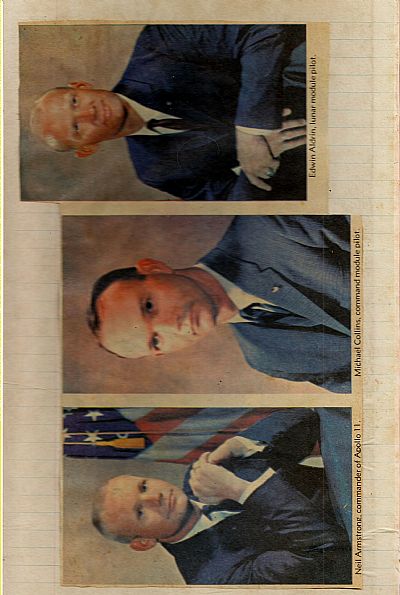
1

2
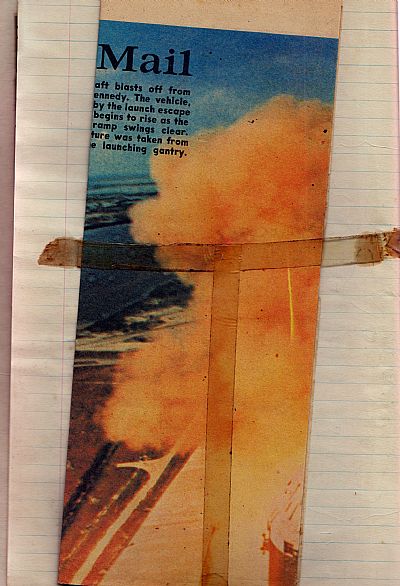
4 Folded newspaper
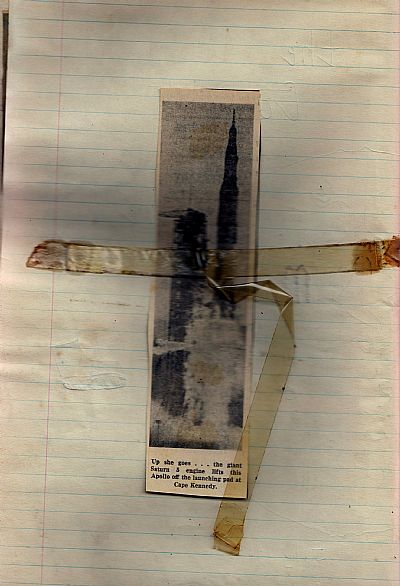
5 As above, but with newspaper removed.
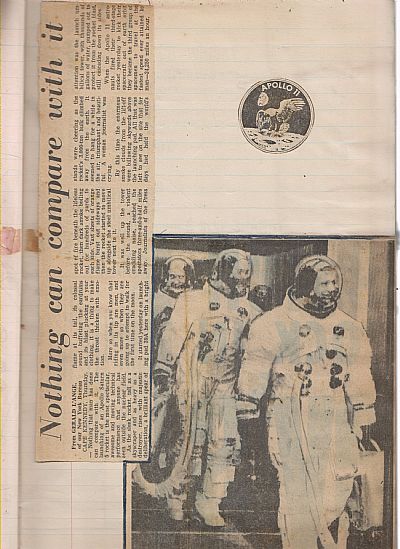
6
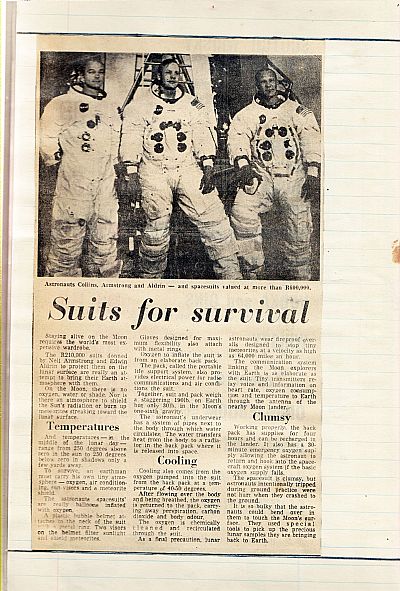
7
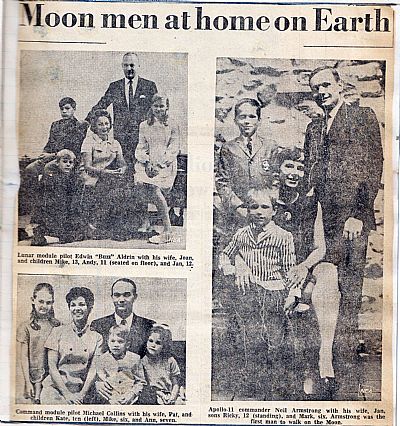
8
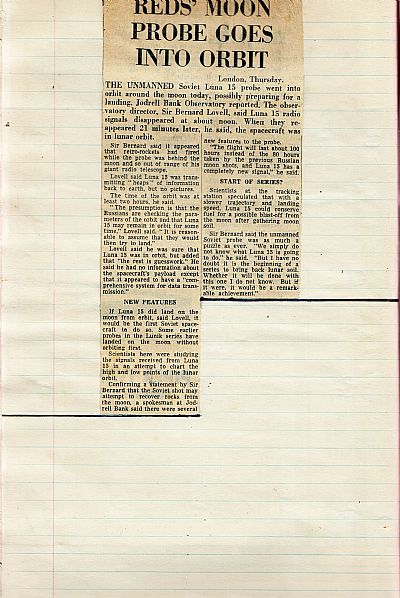
9
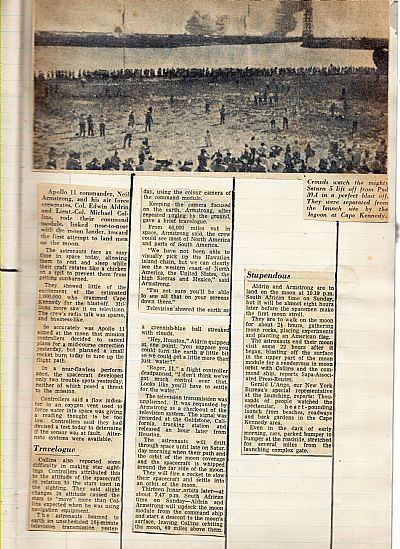
10
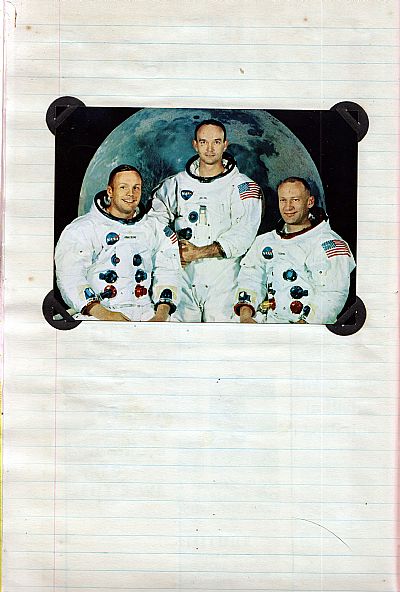
11
The Sunday newspapers gave an address to write away for official photos from NASA. They came bilingual in English and Afrikaans. Here we see N0. 1 THE LUNAR PROJECT The astronauts - Armstrong, Collins and Aldrin : The crew of Apollo 11 - destined to become more famous than all the earlier explorers.
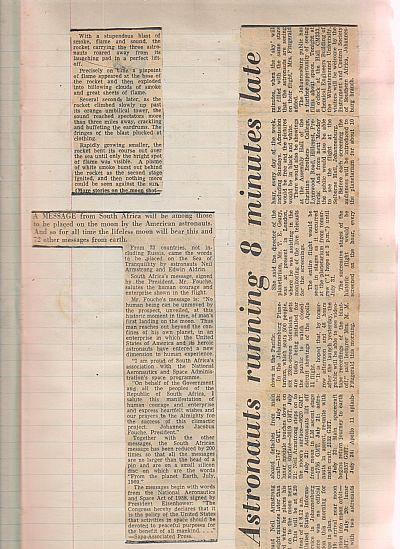
12
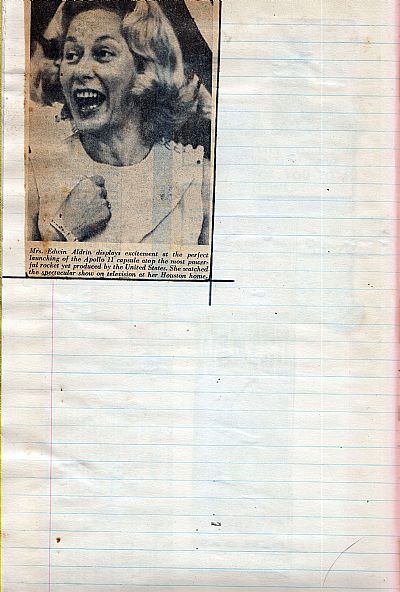
13
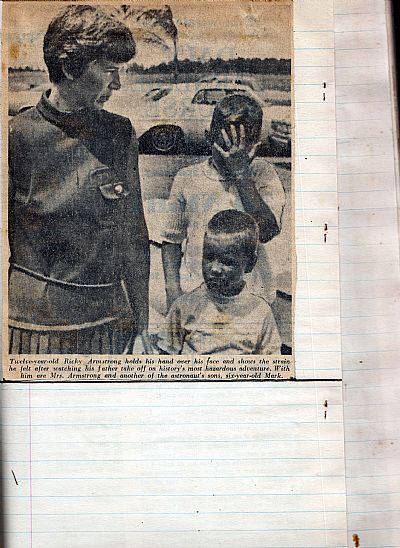
15
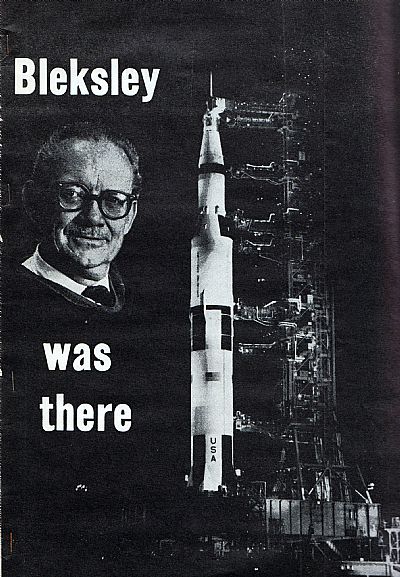
16
Professor Arthur Bleksley was a leading academic scientist in SA, a professor of Applied Mathematics and an astronomer. (I met him when I attended a science forum at the East London Museum when I was a teenager. He also appeared on the radio quite a bit. Evidently he managed to get a seat at the launch. The following is an extract from an address he gave to the Wits Alumni Club in Johannesburg.
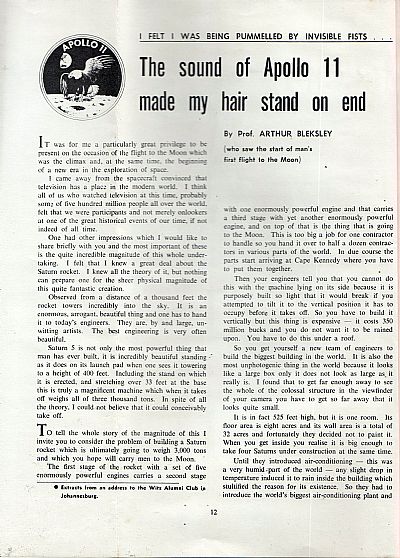
16
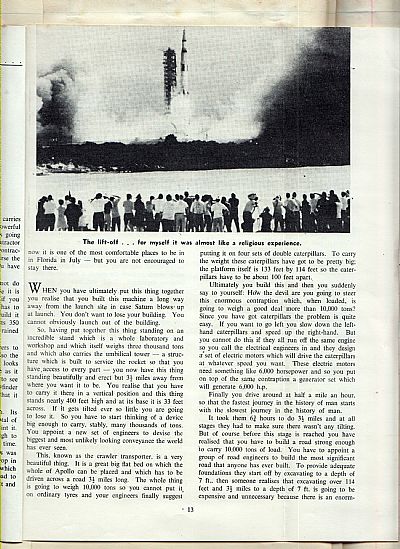
17
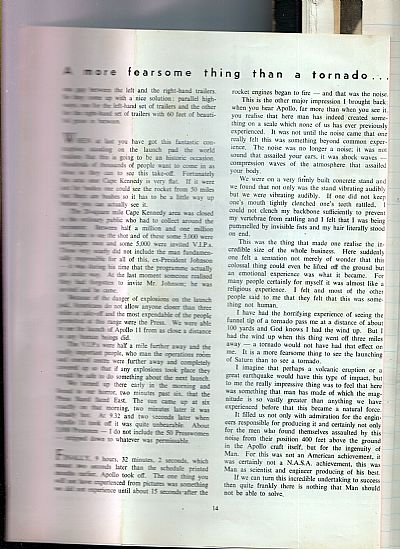
18
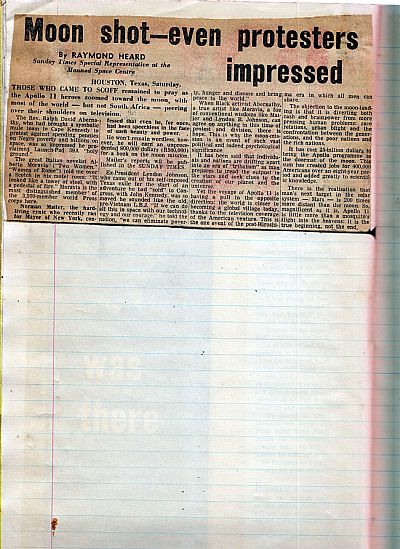
19
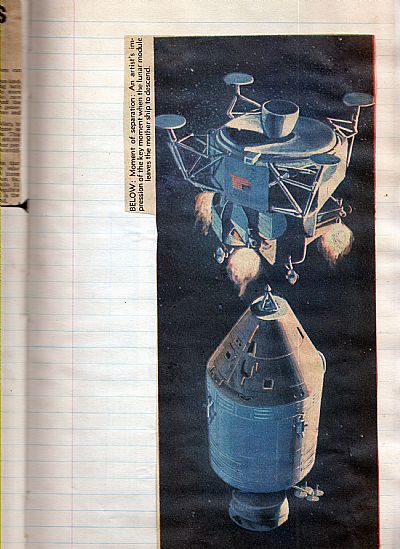
20
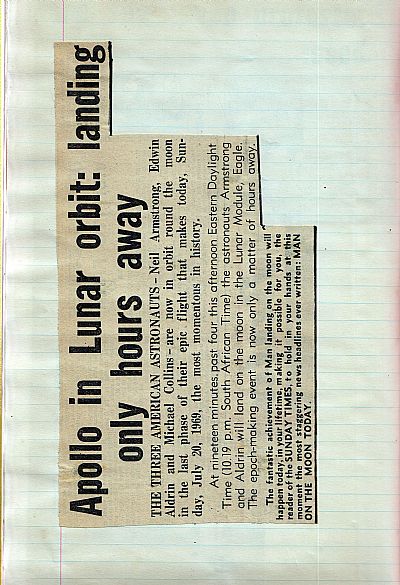
21
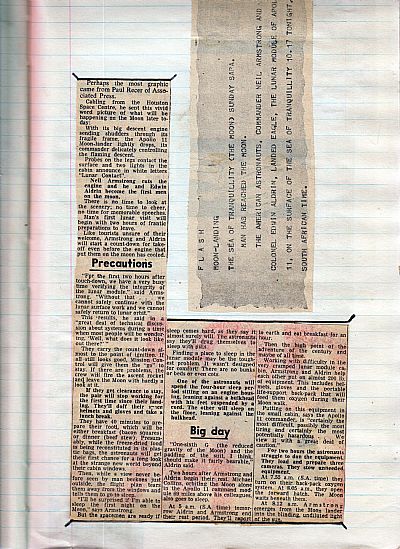
22
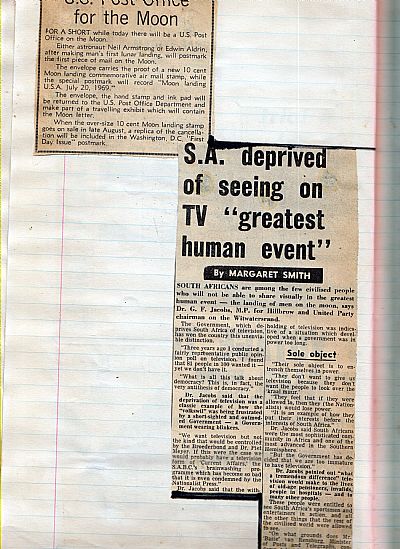
23
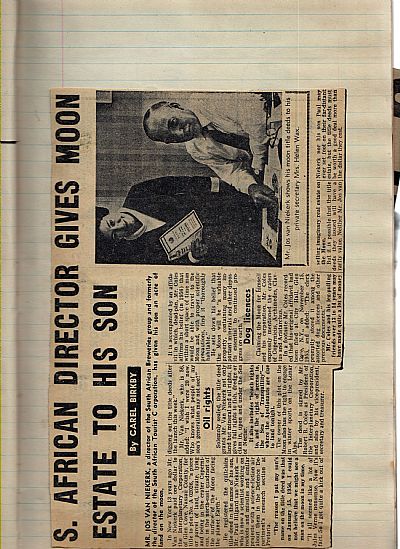
24
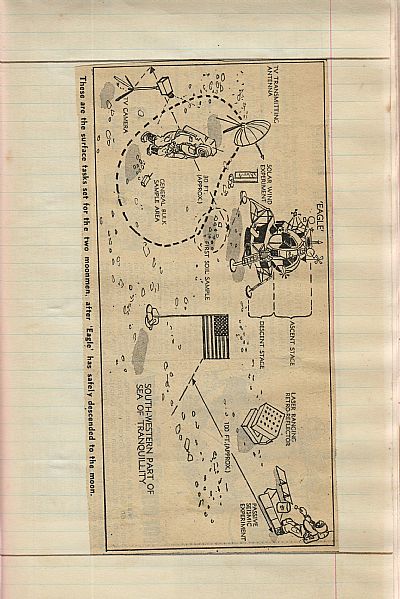
25
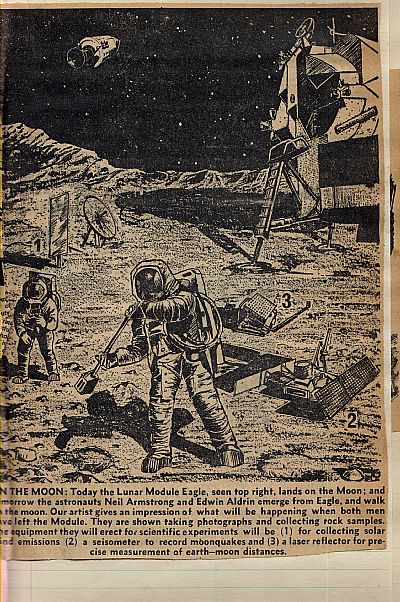
26
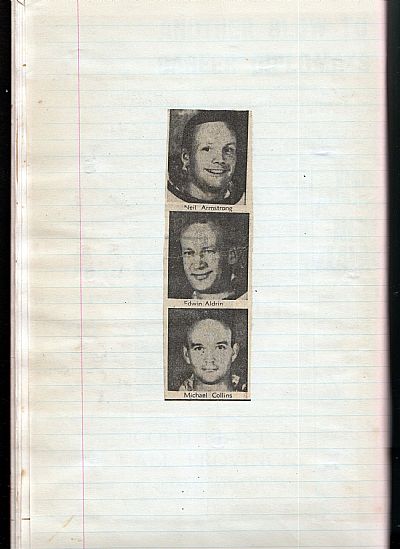
27
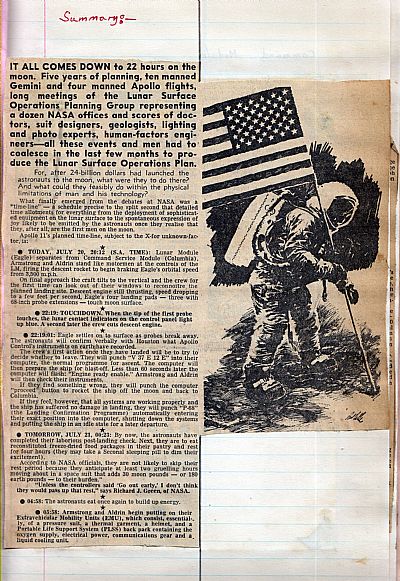
28
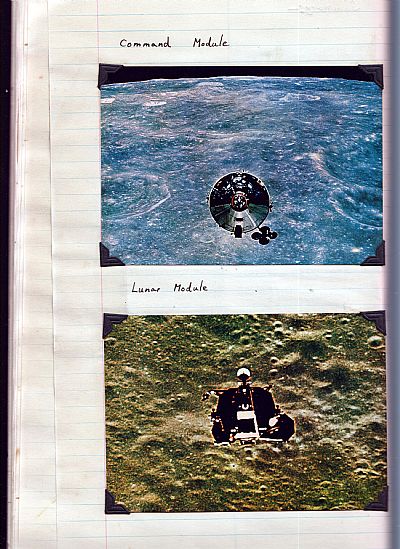
29
Two more cards with photos from NASA printed by a Sunday newspaper.
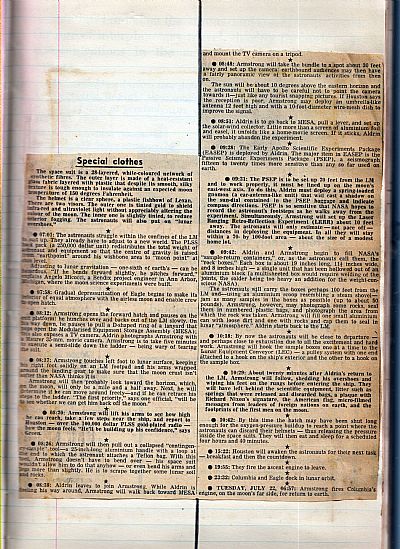
30
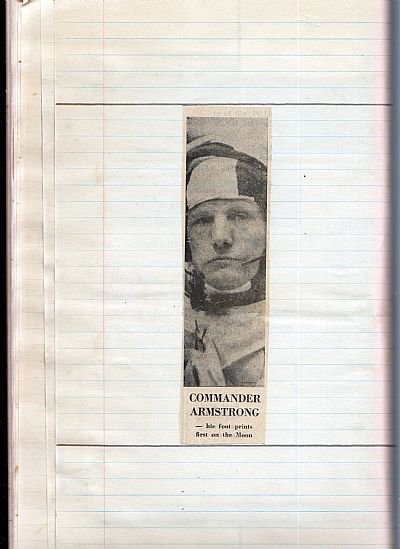
31
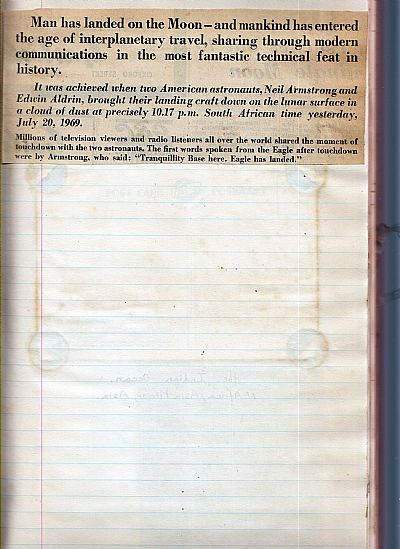
32
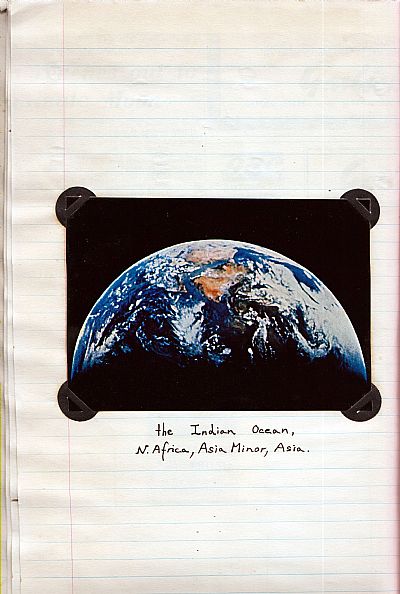
33
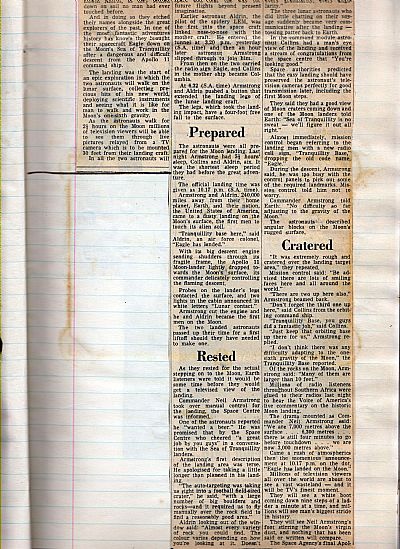
34
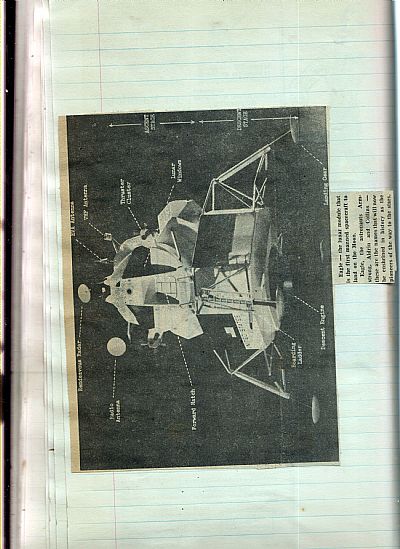
35
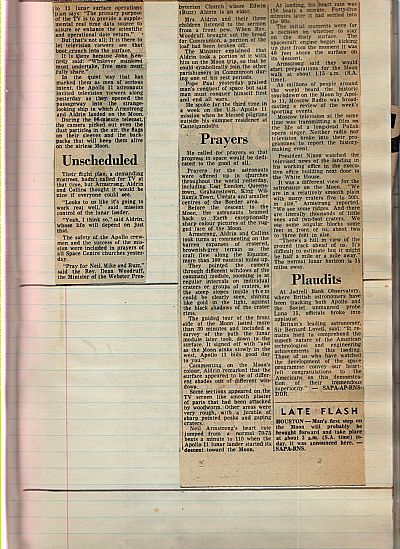
36
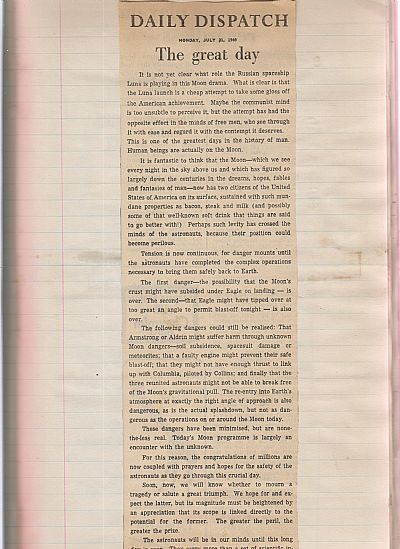
37
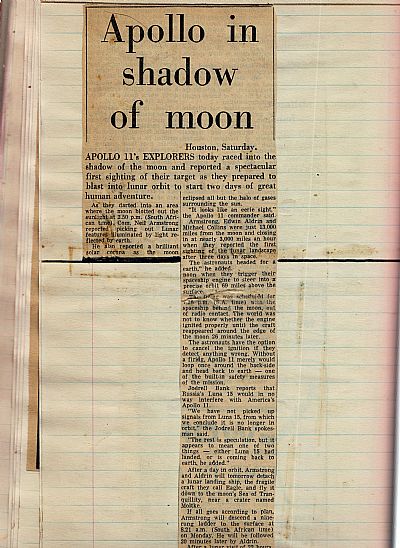
38
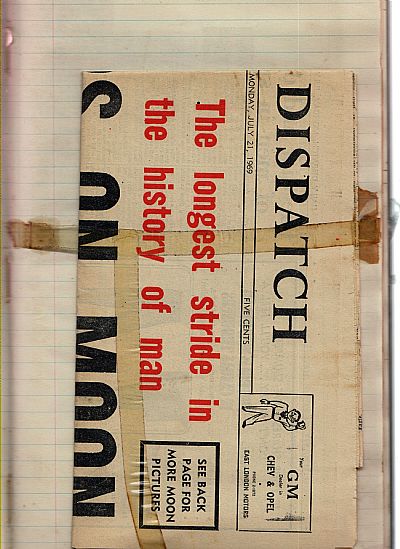
39
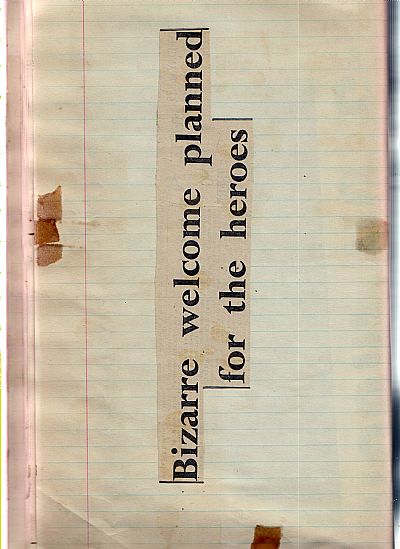
40
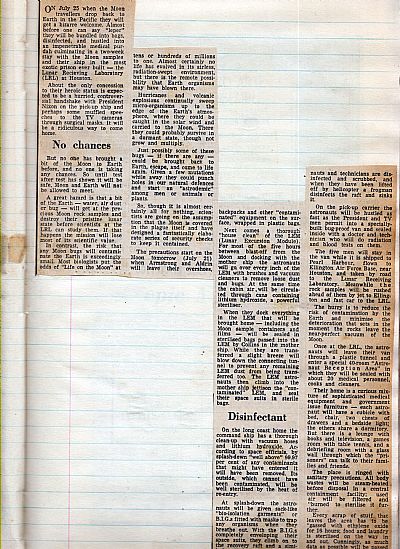
41
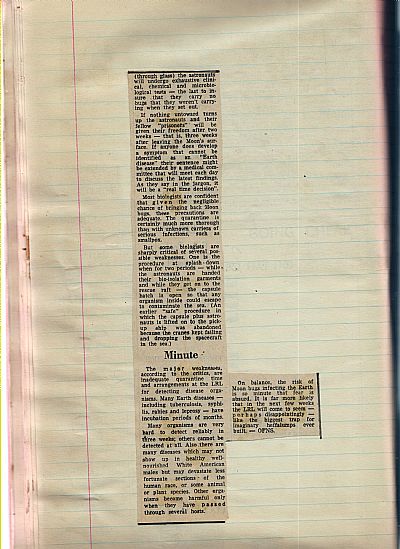
42
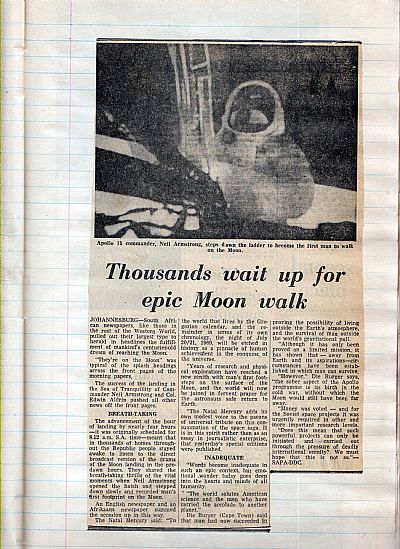
43
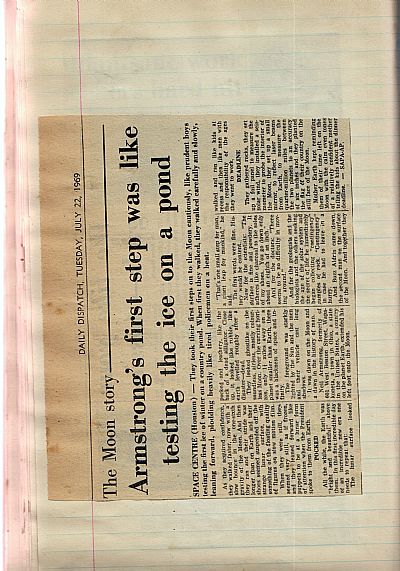
44
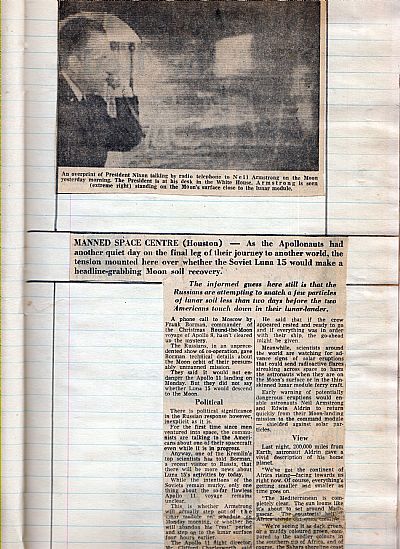
45
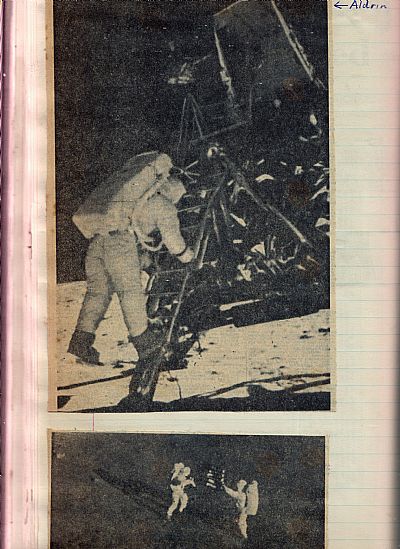
46
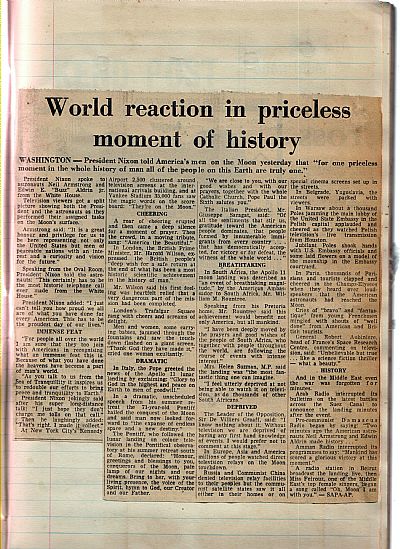
47
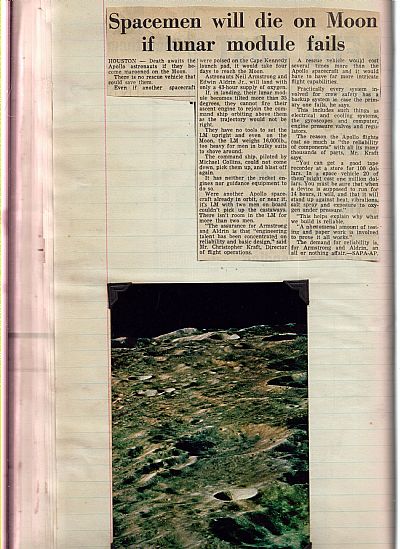
48

49
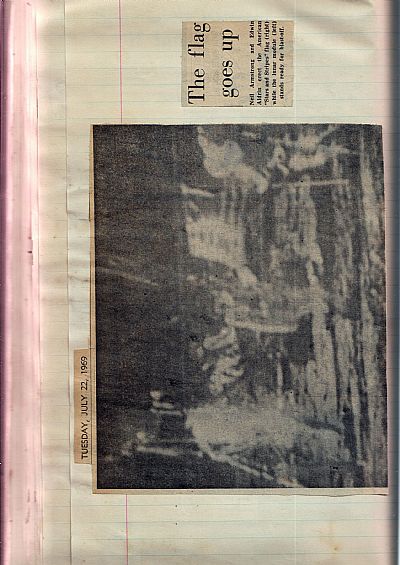
50
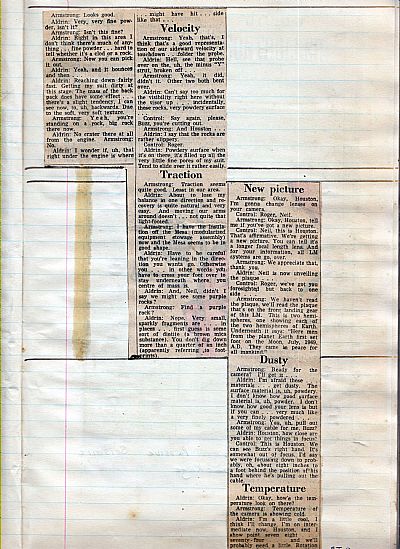
51
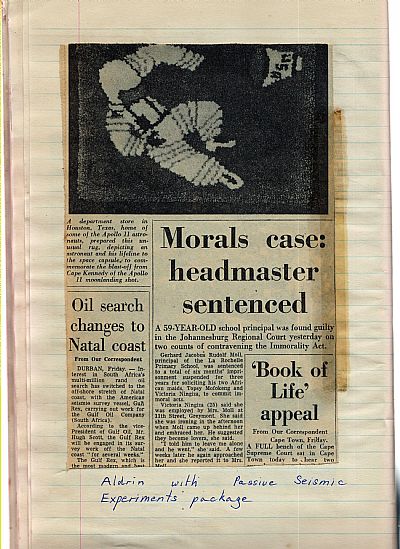
52
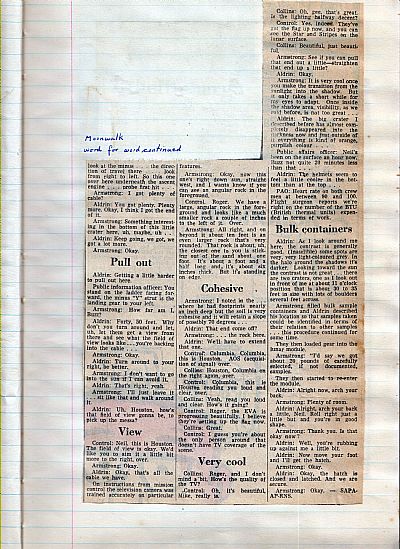
53
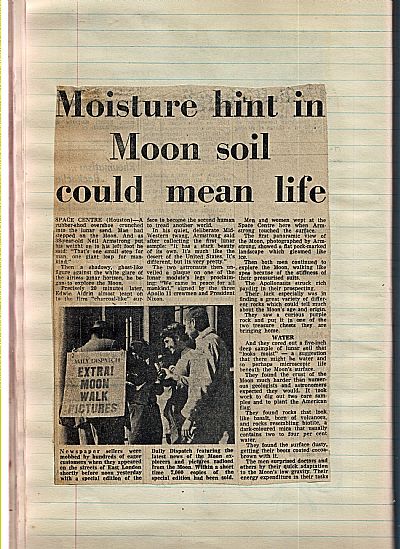
54
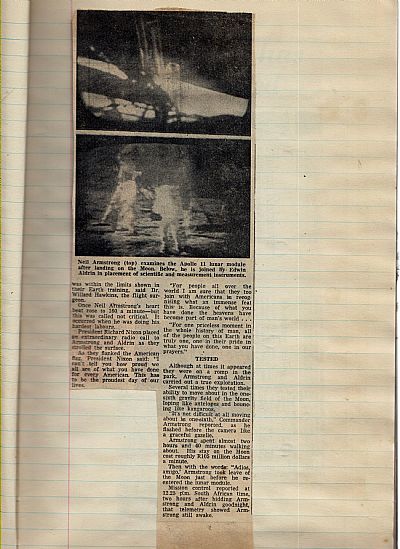
55
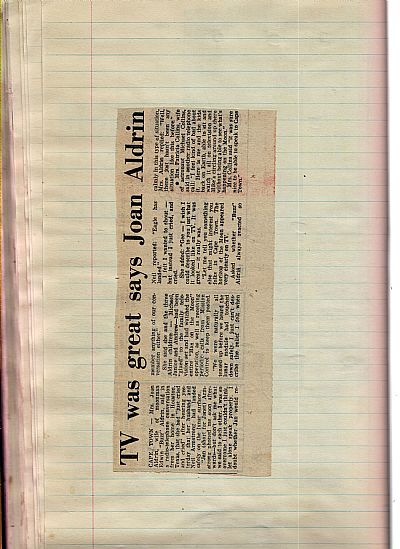
56
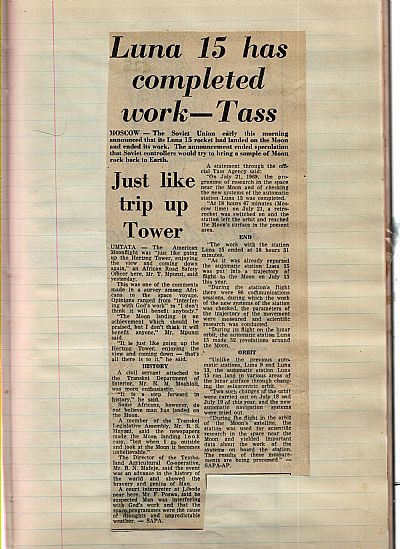
57
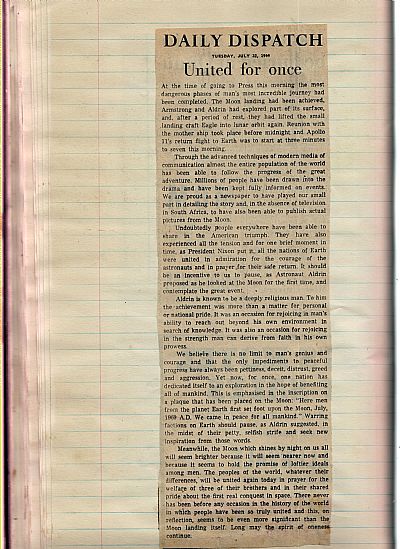
58
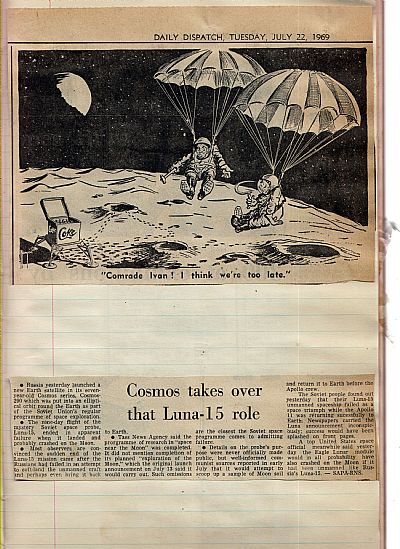
59
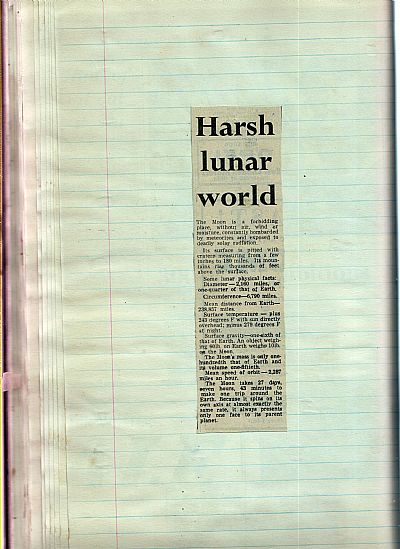
60
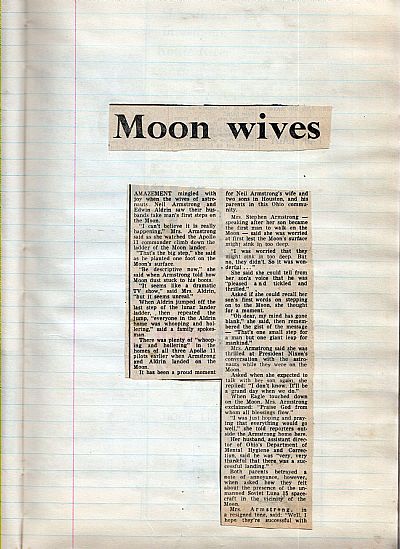
61
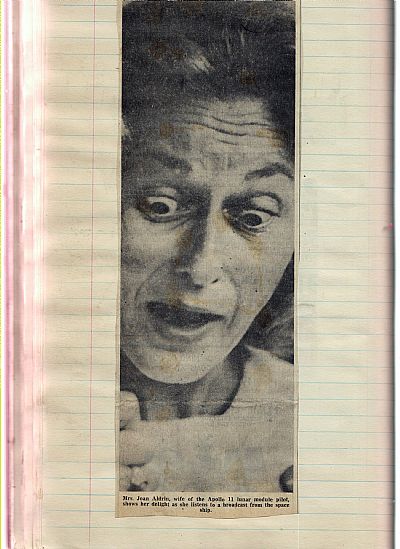
62
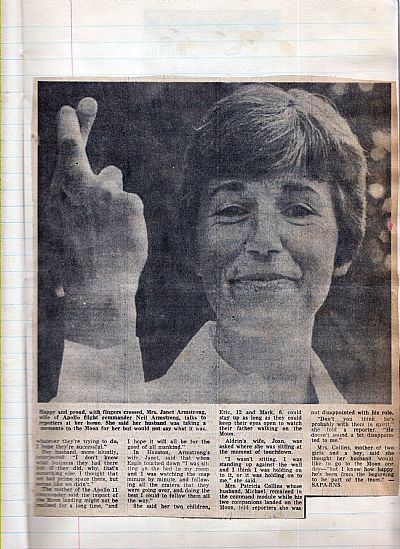
63
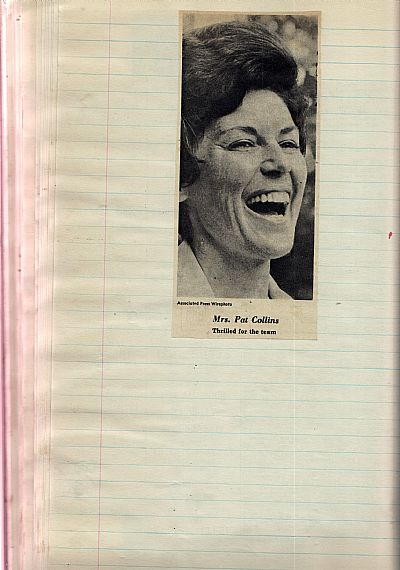
64
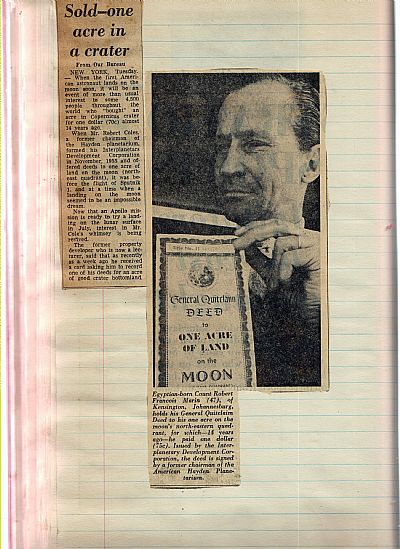
65
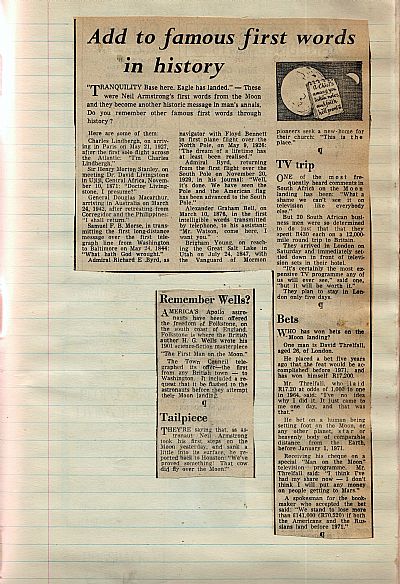
66
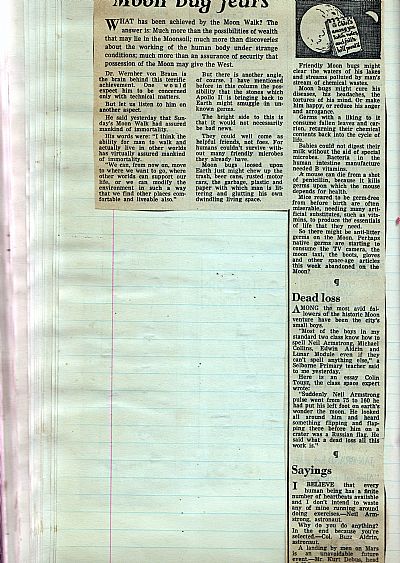
67
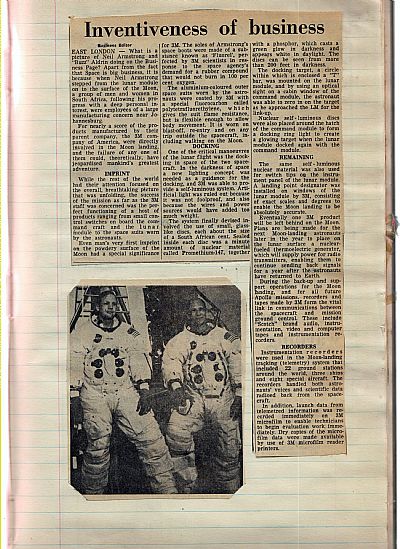
68
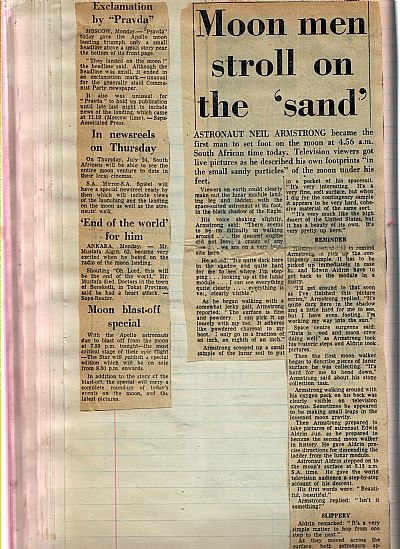
69
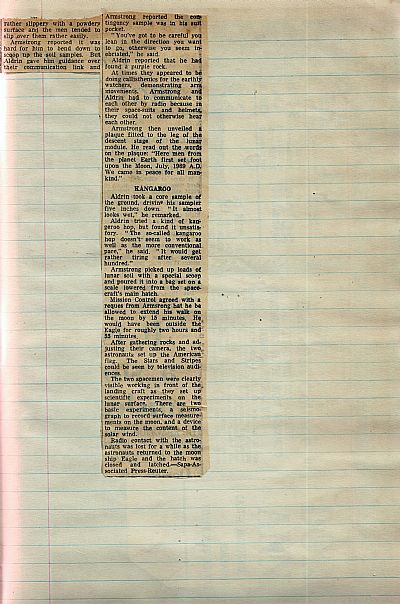
70
There were several more moon missions, but it is extraordinary to think that they stopped way back in 1972. They were costly, risky and out shadowed by other priorities. The end of the USSR meant that there was no more need to outdo the Russians and there have even been some cooperative missions to the international space stations with them.
Space walks became standard routine.
By contrast to subsequent manned space endevours, these first manned space flights were, as David Bowie would sing, like floating in a tin can.
This is Ground Control to Major Tom
You've really made the grade
And the papers want to know whose shirts you wear
Now it's time to leave the capsule if you dare
"This is Major Tom to Ground Control
I'm stepping through the door
And I'm floating in a most peculiar way
And the stars look very different today
For here
Am I sitting in a tin can
Far above the world
Planet Earth is blue
And there's nothing I can do
Since then several countries have developed the ability to go into space both with astronauts and with circling satelites offering a range of services. And it has also become the domain of private companies.
And there are unmanned space ships exploring the far reaches of the solar system ... as long as radio contact can be retained.
As space stations got developed better means of access was needed and we entered the era of the space shuttle.
My, how time flies! Even those were discontinued in 2011 with improved and reusable rocket launched capsules now the norm.
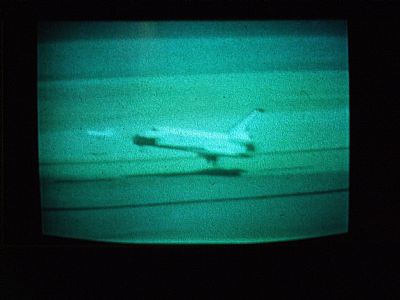
This is a photo that I took of the first space shuttle returning to earth on the TV. The picture is naturally fuzzy, but it was taken live. At that time there was still no other means of downloading images direct to a computer as we do regularly now. The small white shape beyond it was one of the escort jets. This stubby space shuttle had just reentered the earths atmosphere with its protective heat shield glowing red hot. The process of getting capsules back through the atmosphere was known, but this was a fully manned craft and it was still not certain if the re-entry would have damaged too much so it was monitored all the way in.
It is not only amazing to consider how those astronauts got to the moon, but how much texhnology has progressed since then. The Dark Side of the Moon was hardly known back then and there was a communications blackout until they came around again. Today you can read this website almost anywhere on earth, almost instantly, with the aid of that little thing we now take so much for granted and even, theoretically at least if there was the intention, from a circling spaceship. Smartphones did not exist then. Much of this progress has been through the ability to reduce the scale of communications and computer devices drammatically. And we now benefit from that.
Writing this in 2025 means that the context has changed yet again. War in space has not been realised, but using space to observe and inform war is under way. Russia has been at war with Ukraine and is threatening other European countries. The USA under Trump has developed a more directly cooperative relationship with Russia under Putin, which by mid-2025 is just starting to crack. Crews on the space stations are still multi-national. During a radio interview a British astronaut described seeing the bombs exploding in Ukraine. The Russians with him seemed happy with that.
We in South Africa felt a bit left out. Then in 2002 Mark Shuttleworth bought himself a flight as Africa's first space tourist on a Russian spaceship. {The first space tourist was an American Dennis Tito the year before).
When mankind first reached the moon, many pondered this great leap in human endeavour while not yet being able to get on with each other and prevent war. Instead science has enabled weapons to reach almost anywhere in the world in order to best destroy each other. The atomic bomb threat is as fresh as ever. Yet war has also down-sized in technology terms. The drone, in all its forms, now means we can sit somewhere secluded and bomb somewhere else, watching all this on a screen up until the moment of impact. And we too can see this happen on our own screens when such foootage is shared - almost as it happens. Anywhere.
Such is the form of PROGRESS.
Ever more statellites ... and space debris
We have been living in Scotland now for over 2 decades. Seeing satellites pass overhead not only requires straining my neck back, but making the best of cloudless skies and shivering on the occasional clear winter skies. They are best seen in early evening. The satellites do not actually glow, but need the light from the sun just set over the horizon. This is also why they are best seen on a clear dark evening about an hour after sunset .... or similarly before sunrise.
As I write this in 2025 there are an estimated 11,700 satellites up there. They are used for an amazing variety of services. And what is more amazing is that we have all benefitted from them, whether from weather forecasts, GPS (Global Positioning System) navigation or phone signals.
I once saw an incredible sight that no one else seemed to. A smoiking fireball travelled roughly over Dumbarton eastwards. It appears to have been space debris reentering the earth's atmosphere.
WIKIPEDIA : https://en.wikipedia.org/wiki/Telstar
https://simple.wikipedia.org/wiki/List_of_people_who_have_walked_on_the_Moon

